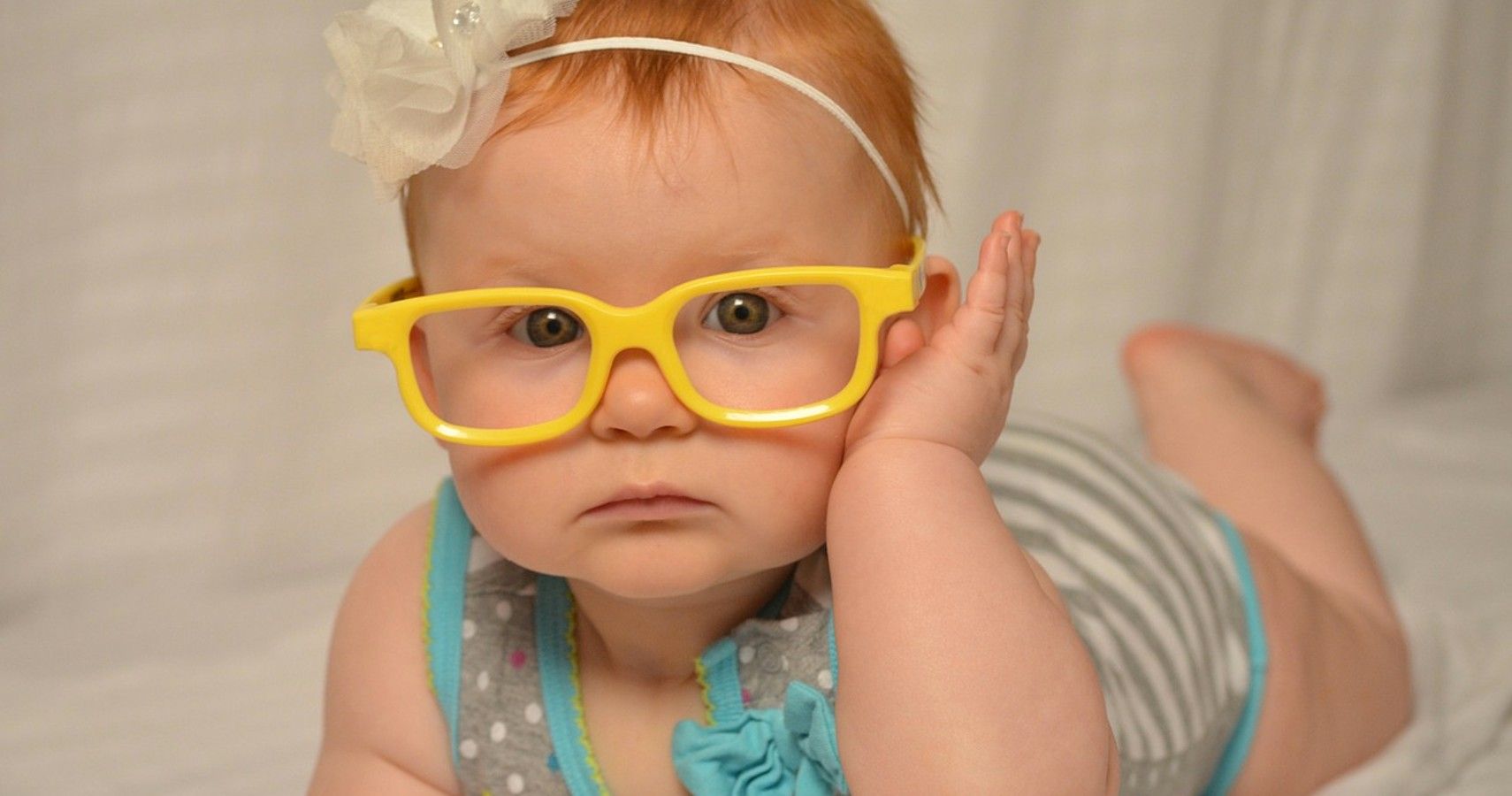When a baby is born, their vision is still developing. In fact, most babies don’t develop their distance vision until they’re a year old. When they’re newborns, infants usually have eyesight anywhere between 20/200 and 20/400, meaning they can only see objects clearly around 8 to 12 inches away. By their first birthday, most infants have developed 20/20 vision unless they can a problem with their eyesight.
However, it’s possible your baby may require glasses as young as 6-months old if they’re exhibiting signs that suggest their eyes aren’t developing properly, including visual problems like amblyopia (lazy eye), esotropia (cross-eyes), exotropia (outward eyes), myopia (nearsightedness), and hyperopia (farsightedness).
Below, we review several important signs that can indicate your baby is struggling with their vision and may require glasses.
7 Frequent Eye Rubbing
It’s not uncommon for babies to rub their eyes when they’re tired – people of all ages do this. It’s especially common in younger babies because they require more sleep and thus get tired more easily.
But Wilkinson Eye Center explains that babies start becoming more awake and alert as they pass the 4-month mark, so they should be rubbing their eyes less. So, if you notice the eye rubbing increases in frequency, especially when your infant isn’t tired, it could be a sign they’re trying to focus but are unable to.
6 They Struggle To Focus
By four months of age, a baby’s eyes have developed to the point where they should be able to focus, allowing them to focus on an object as it moves. But if you see that your infant is struggling to focus – for example, they’re unable to follow a toy in your hand as you move it side-to-side – it may indicate they require glasses.
5 Wandering Eyes
If one of your baby’s eyes (or both) wanders, it could be a sign their eye muscles are failing to develop properly or aren’t strong enough. This could be due to several conditions.
Amblyopia, commonly referred to as lazy eye, occurs when an eye crosses or turns outwards. Signs include wandering eyes, failure for the eyes to work together, and poor depth perception, Mayo Clinic explains.
Conversely, strabismus is a condition that occurs when one or both eyes turn inwards or outwards. It’s characterized by eyes that don’t look in the same direction or move together and may cause the individual to quint, tilt their head, or bump into things.
Glasses can help resolve the effects of both conditions. Speak to your eye care professional for more information.
4 Their Eyes Are Crossed
Like wandering eyes, if your baby’s eyes are crossed it can be another sign of abnormal visual development. This can be another sign of strabismus or may indicate your infant is struggling with coordination.
Bausch + Lomb explains signs of crossed eyes can include eyes that fail to move together, tilting one’s head to the side, poor depth perception, and squinting with only one eye.
However, glasses can often easily correct this problem.
3 Holding Objects Too Close
If your baby is struggling to focus or has blurry vision, you’ll notice that they’ll start holding objects closer to their face to compensate for the poor vision. If your baby does this frequently, don’t assume they’re simply overly curious. It could be a sign they need glasses.
2 Schedule An Eye Exam
The only way to determine with certainty if your baby needs glasses is to schedule an eye exam with an eye care professional, who can evaluate the health and development of your infant’s vision.
During the appointment, they will likely perform several simple tests that don’t require the infant to read. For example, All About Vision explains they may test the pupil’s response to seeing if it satisfactorily dilates in the presence of light and constricts in its absence.
Eye tests to determine if a baby requires glasses are usually non-invasive and can be performed with the parent in the room.
1 Rare Signs Of Vision Problems
These aren’t the only signs to be on the lookout for that may suggest your baby is struggling with their eyesight. As the American Optometric Association (AOA) explains, parents should watch for:
- Excessive tearing (which can signify blocked tear ducts)
- Red, crusty eyelids (can be a sign of infection)
- Frequent eye turning (can be due to poor muscle control)
- Sensitivity to light (may indicate heightened eye pressure)
- Presence of a pupil (can signify cancer)
The aforementioned signs are rare, but if they do occur, they’re likely not treatable only with glasses. If your child exhibits any of these signs, we encourage you to get in contact with an eye care professional to have your infant evaluated and to assess treatment options.
For more information on your baby’s vision and how it will develop in the first year of life, please reach out to your healthcare practitioner. If you suspect your baby needs glasses or is struggling with their vision, the best thing you can do is to get them checked out as soon as possible for both their comfort and your peace of mind.
Sources: Innes Eye Clinic, Wilkinson Eye Center, Mayo Clinic, All About Vision, Bausch + Lomb, Romper, AOA,

